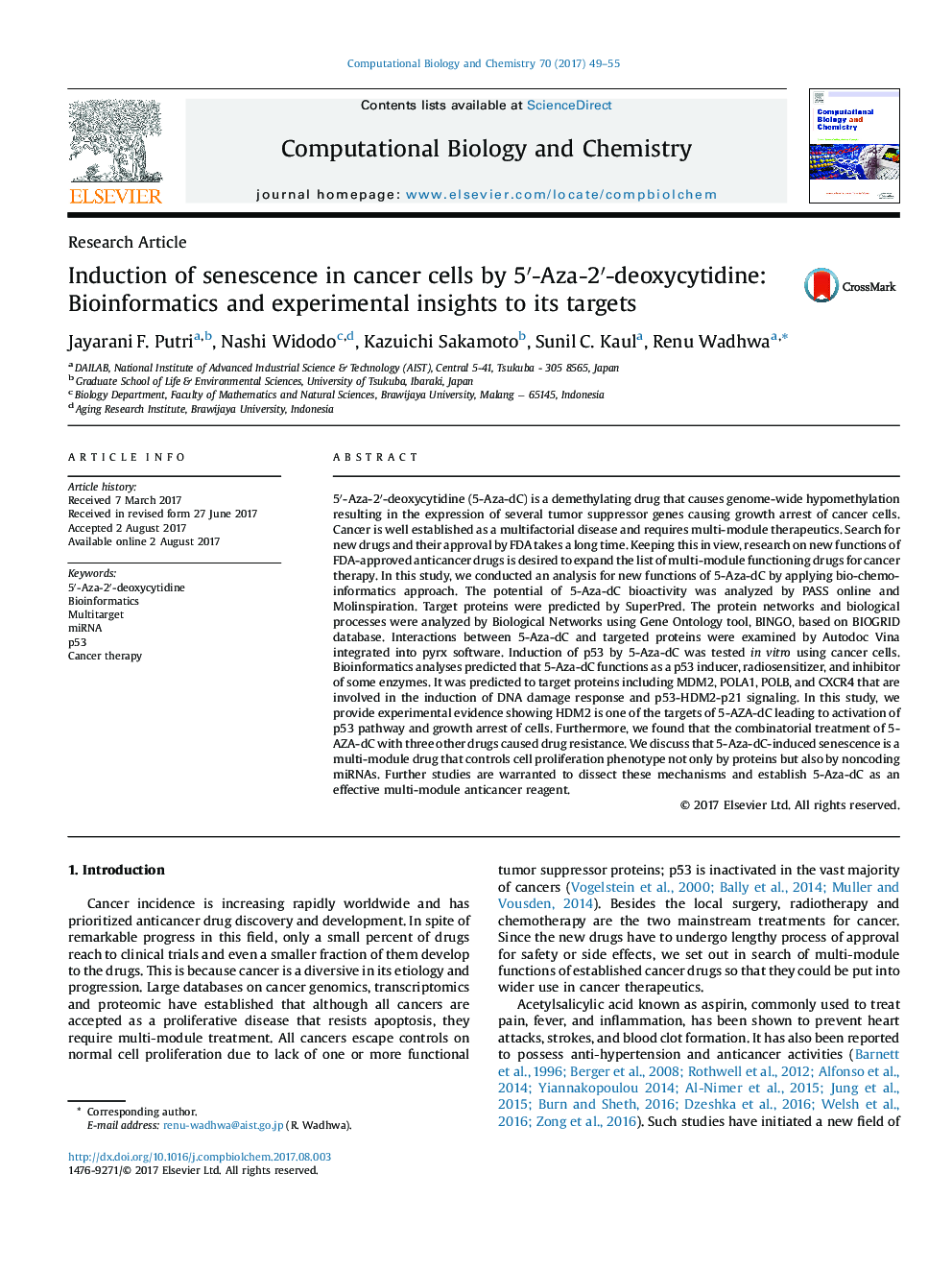| کد مقاله | کد نشریه | سال انتشار | مقاله انگلیسی | نسخه تمام متن |
|---|---|---|---|---|
| 4752586 | 1416277 | 2017 | 7 صفحه PDF | دانلود رایگان |

- Demethylating drug, 5-Aza-dC targets HDM2 yielding activation of p53 pathway and growth arrest of cancer cells.
- Cells treated with 5-AZA-dC in combination with three other drugs showed drug-resistance characteristics.
- 5-Aza-dC is a multi-module drug. Further studies are warranted to dissect its mechanism(s) of action beyond demethylation.
5â²-Aza-2â²-deoxycytidine (5-Aza-dC) is a demethylating drug that causes genome-wide hypomethylation resulting in the expression of several tumor suppressor genes causing growth arrest of cancer cells. Cancer is well established as a multifactorial disease and requires multi-module therapeutics. Search for new drugs and their approval by FDA takes a long time. Keeping this in view, research on new functions of FDA-approved anticancer drugs is desired to expand the list of multi-module functioning drugs for cancer therapy. In this study, we conducted an analysis for new functions of 5-Aza-dC by applying bio-chemo-informatics approach. The potential of 5-Aza-dC bioactivity was analyzed by PASS online and Molinspiration. Target proteins were predicted by SuperPred. The protein networks and biological processes were analyzed by Biological Networks using Gene Ontology tool, BINGO, based on BIOGRID database. Interactions between 5-Aza-dC and targeted proteins were examined by Autodoc Vina integrated into pyrx software. Induction of p53 by 5-Aza-dC was tested in vitro using cancer cells. Bioinformatics analyses predicted that 5-Aza-dC functions as a p53 inducer, radiosensitizer, and inhibitor of some enzymes. It was predicted to target proteins including MDM2, POLA1, POLB, and CXCR4 that are involved in the induction of DNA damage response and p53-HDM2-p21 signaling. In this study, we provide experimental evidence showing HDM2 is one of the targets of 5-AZA-dC leading to activation of p53 pathway and growth arrest of cells. Furthermore, we found that the combinatorial treatment of 5-AZA-dC with three other drugs caused drug resistance. We discuss that 5-Aza-dC-induced senescence is a multi-module drug that controls cell proliferation phenotype not only by proteins but also by noncoding miRNAs. Further studies are warranted to dissect these mechanisms and establish 5-Aza-dC as an effective multi-module anticancer reagent.
90
Journal: Computational Biology and Chemistry - Volume 70, October 2017, Pages 49-55